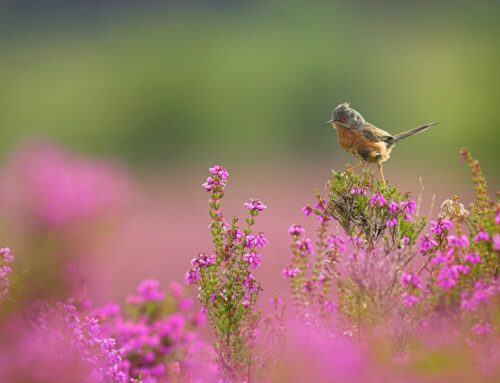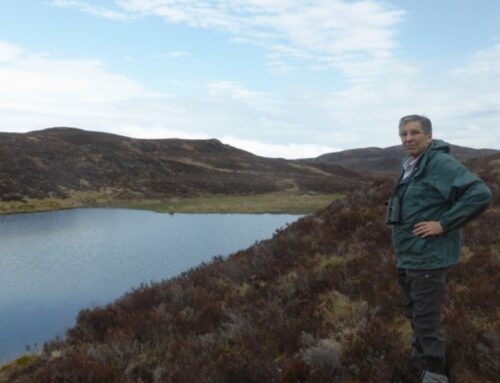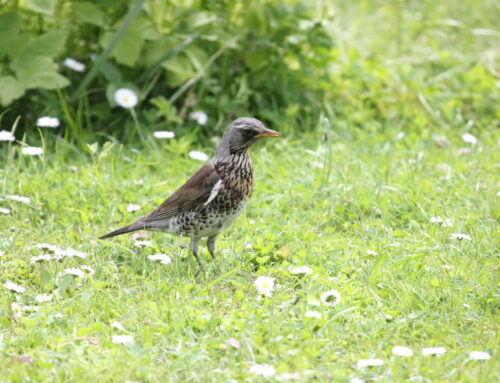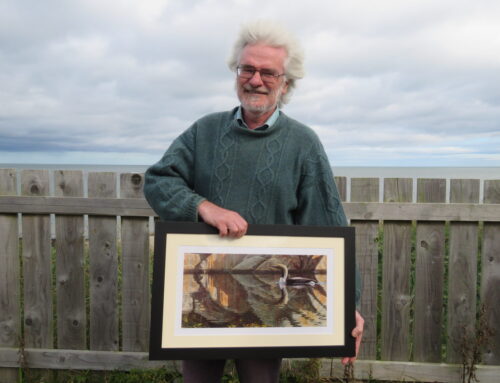What to look for in April
April, and spring is now in full flow (albeit with the threat of snow in the north!). While some migrant species are yet to return to the UK, the list of rare breeding birds that will be settling into breeding territories continues to grow every week. I hope readers have been out recording many rare breeders already this spring, but if not, there’s no reason not to now.
As well as arriving migrants, the last few weeks have seen the departure of many thousands of waterbirds to breeding grounds to the north and east of the UK. This means that those left behind are more likely to be breeding birds, so now is the time to start paying attention to Pintail, Wigeon, Shoveler and Pochard on local wetlands. Wigeon are a tricky species to interpret away from core breeding areas in the Pennines and Scotland, with birds lingering late into the spring or even in the summer on southern wetlands without seemingly any intention of breeding, but from late April onwards we regard records of the other three species in suitable breeding habitat as an indication of possible breeding. Even single males loafing around wetlands are of interest – it’s possible that there could be a female lurking nearby, maybe on a nest.

Shoveler, Mark Eaton
While most of England’s breeding Black-necked Grebes are restricted to a few key colonies, such as St Aidan’s RSPB reserve in Yorkshire, every year a few pairs are found scattered around at other locations. At this time of year there may still be pairs shifting around, checking out potential new breeding sites – they tend to prefer shallow eutrophic pools and small lakes, with floating and emergent vegetation and reed or sedge fringes. If you are lucky enough to find a pair, or even a single bird, do consider whether there’s any chance of them making a breeding attempt before broadcasting the news and risking undue disturbance. Our guidance on reporting rare breeding birds during the breeding season can be found here.

Black-necked Grebe, Judith Smith
The early season situation can be confused by birds still on passage but by now, however, the presence of Little Ringed Plovers at a site should be taken as evidence of at least possible or probable (if a pair, or display is seen) breeding. We believe that this species is under-recorded in much of its British range and would like to encourage greater effort away from well-watched wetland sites – to quote last month’s blog, “a significant proportion of the breeding population are on industrial and brownfield sites, active quarries and river shingles and thus may remain undiscovered” – why not check a local map or satellite photos to see if you can find some potential locations worth checking? Little Ringed Plovers can be noisy at this time of the season, displaying and defending territories, so relatively easy to find.
RBBP video on recording Little Ringed Plover
The UK’s Bittern population has grown steadily since a low point of 11 or 12 booming males in 1997, with now over 200 males and growing. With this increase in numbers has come a steady increase in range. Whilst much of the population is at large reedbed sites, the range expansion has seen a scatter of less obvious sites being used, including some relatively small reedbeds. I think all readers will know how to find Bitterns – but do bear in mind that many birds may only boom very early or late in the day. Worth setting your alarm for a check of local wetland sites?
By now Short-eared Owl pairs should be settled on breeding territories, with late April being the peak time for egg-laying, and perhaps surprisingly they can be easier to find during the incubation period rather than when settling earlier in the spring. This is another under-recorded species, so we are keen to encourage the submission of records, and of course the heather moorland, rough grassland and young plantation habitat favoured by the owls may have other interesting species. During the incubation period Short-eared Owls are most active in the four hours before dusk (and to a lesser extent the four hours after dawn); scanning from a vantage point over suitable habitat may bring success.

Short-eared Owl, Mark Eaton
Although there may be a few lingering birds, most of our wintering Redwing, Fieldfare and Brambling have now returned to Scandinavian breeding grounds. That means that it’s worth keeping an eye and ear out for any remaining birds establishing territories, although in recent years records of breeding Fieldfare and Brambling have been very infrequent. Redwing breeds annually in small numbers mostly north of the Great Glen up to Shetland, nesting in a range of woodland and scrub types.
They might not provide the same frisson of excitement as finding a rare native breeder, but please remember that the RBBP includes rare non-native species within its reporting. If you see a species such as Black Swan, Muscovy Duck, Red-crested Pochard or Indian Peafowl – or indeed one of the rarer non-natives such as Wood Duck or Golden Pheasant – in circumstances that suggest potential breeding, please submit the record with full details, just as you would do for a native rare breeder!

Black Swan, Max Hellicar
Finally, to repeat a message from last month, one species you should not be looking for this spring is Capercaillie. The most recent RSPB-led survey indicated the population of this red-listed grouse has dropped further, to an estimated 542 individuals (read more here). The decline has been driven by a complex interaction between drivers including habitat loss, mortality due to fence collisions and climate change. Now, with the population at such a low level, disturbance during the breeding season is a real concern, and much effort is being put into reducing recreational disturbance in important areas. This is not just about mountain bikers and walkers, but includes disturbance from those wanting to see and photograph Capercaillie. The Cairngorm Capercaillie Project is asking birdwatchers and photographers not to seek out Capercaillie between March and August so they are allowed to lek and breed in peace. As it is a Schedule One species, deliberate or reckless disturbance is a criminal offence, and police and ranger patrols will be checking sensitive sites this year with a real risk of prosecution for any individuals found causing disturbance.
Note that annual lek monitoring is conducted with great care by trained individuals to prevent undue disturbance – the RBBP does not seek additional records of this species for monitoring purposes.







